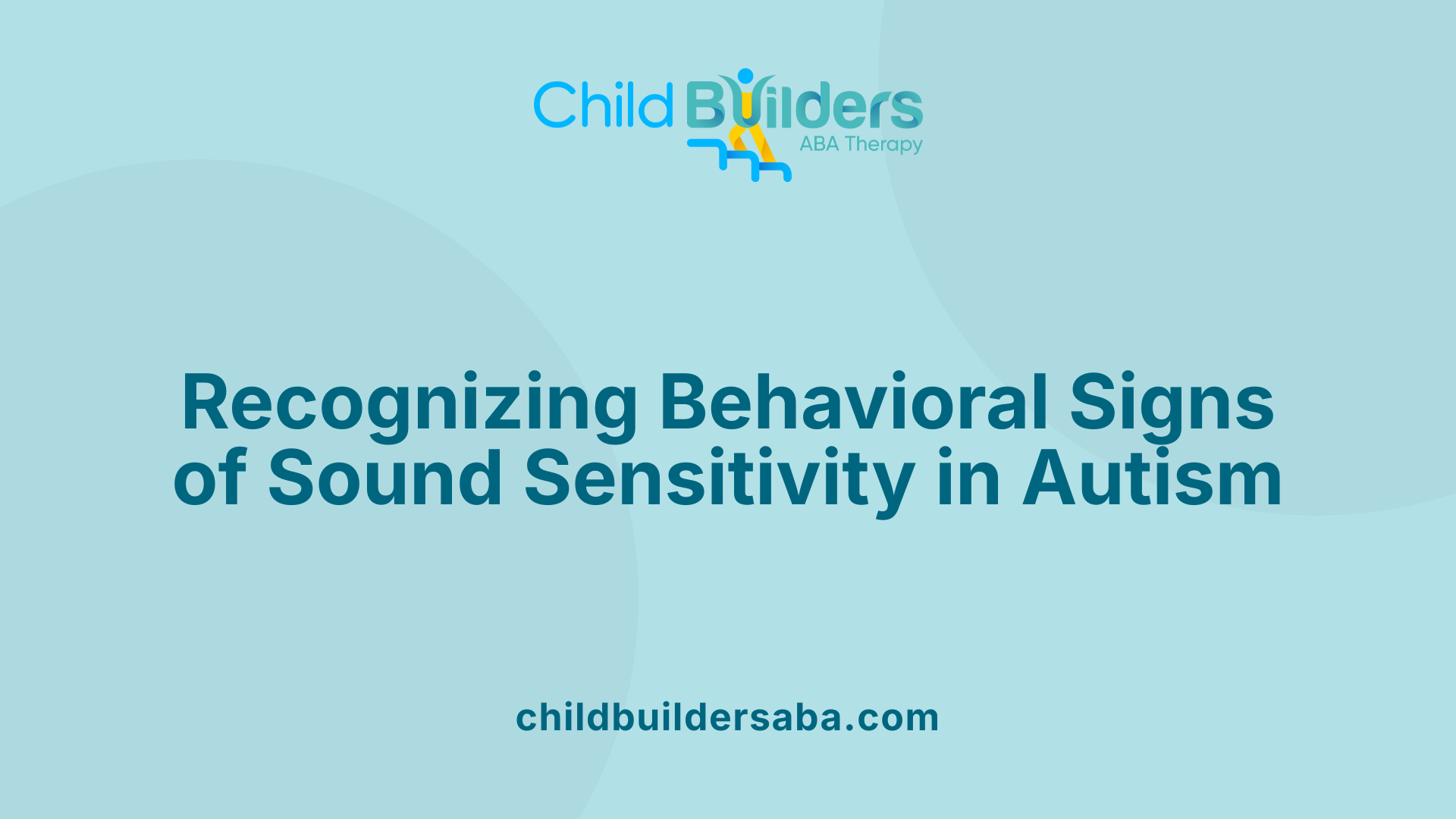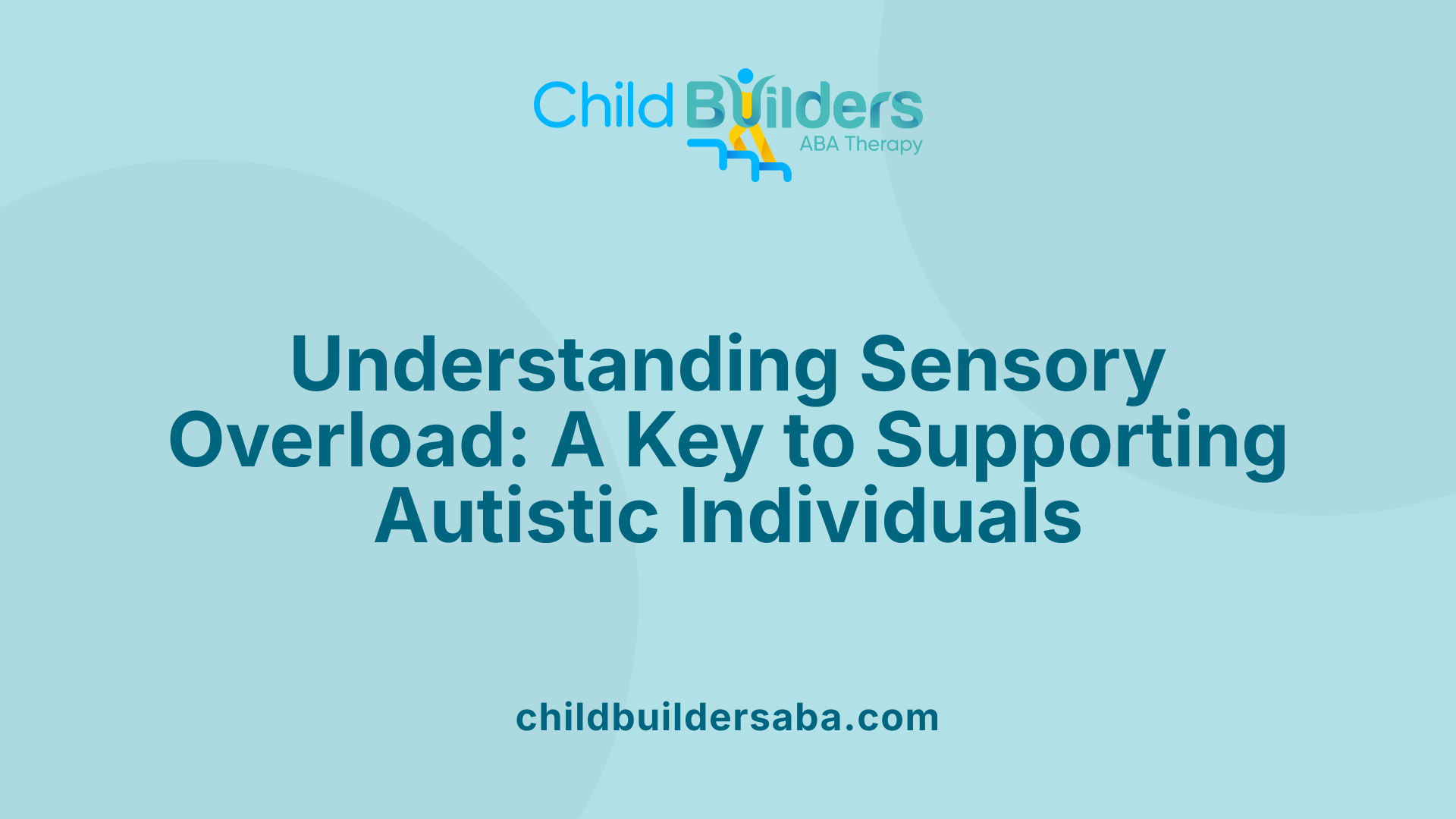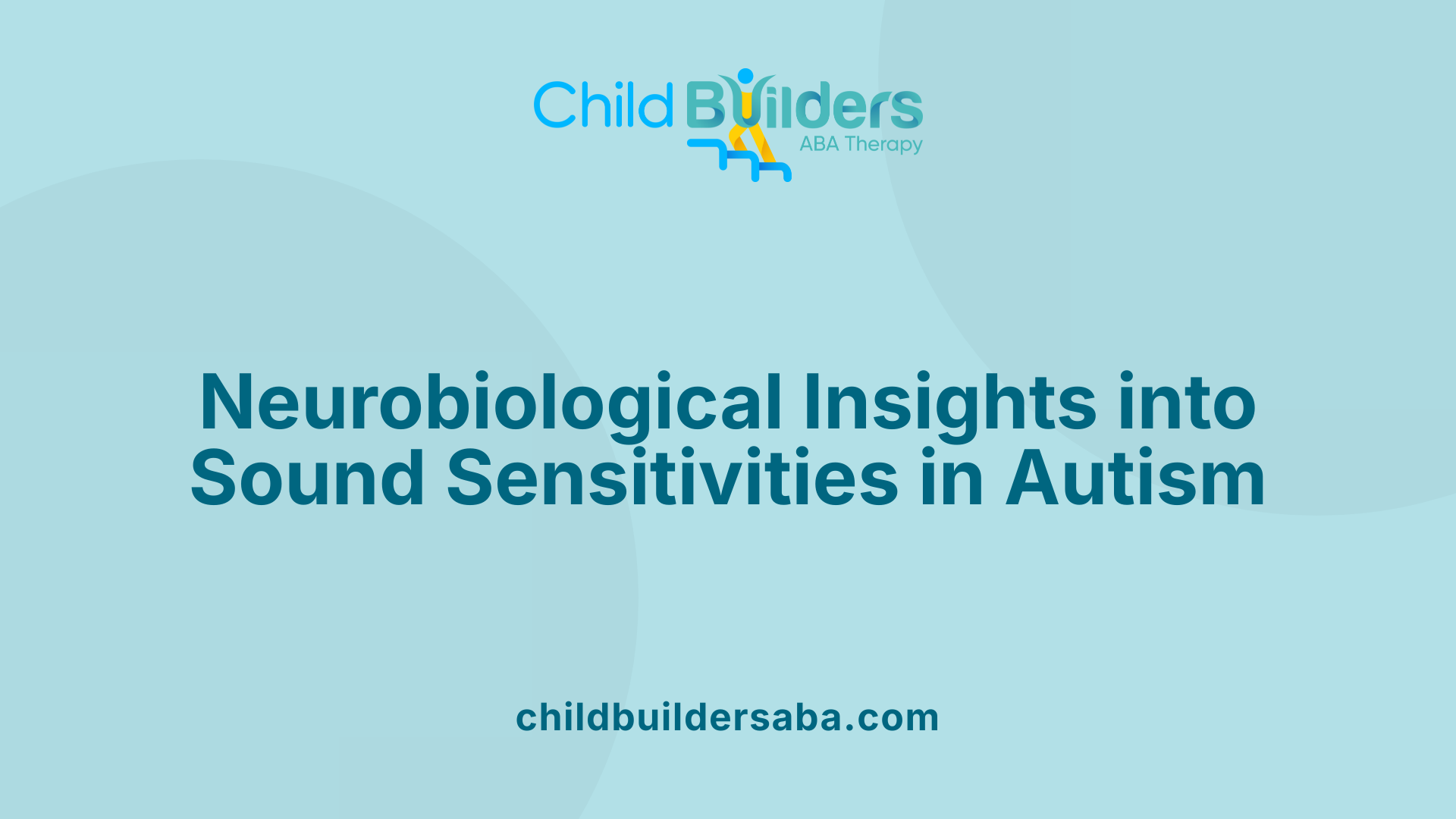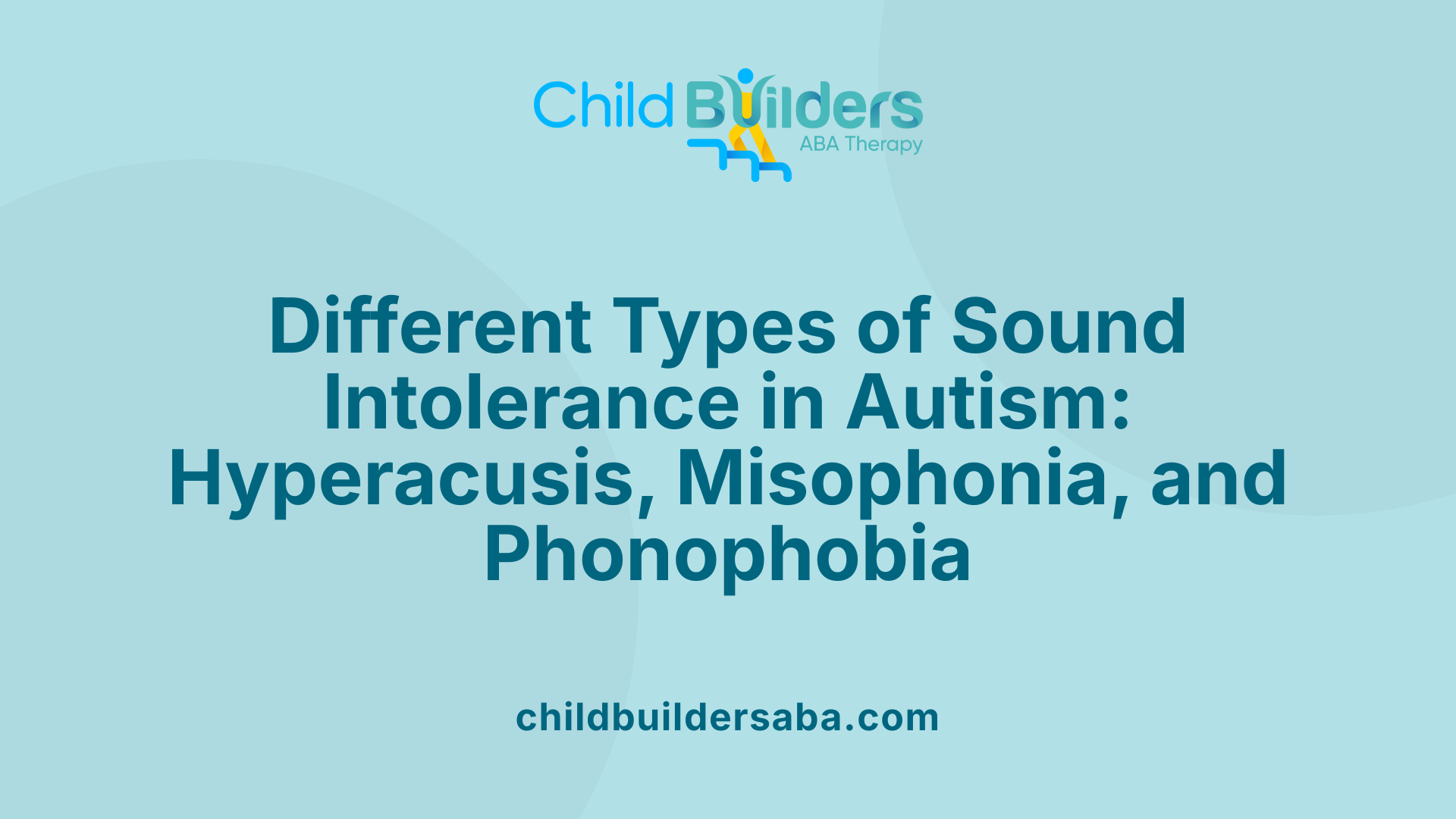Autism and Sound Sensitivity

Exploring the Complex Relationship Between Autism and Sound Sensitivity
Autism Spectrum Disorder (ASD) is characterized by diverse sensory processing differences, with sound sensitivity being one of the most common and impactful. Between hyper- and hyposensitivity, many autistic individuals experience significant challenges that affect daily functioning, safety, and emotional well-being. This article uncovers the scientific underpinnings of auditory sensitivities, signs to watch for, and effective management strategies to foster understanding and support.
Signs and Behaviors Indicating Sound Sensitivity in Autism

What are the common signs of autism related to sound sensitivities?
Autistic individuals often display several behaviors indicating they are sensitive to sound. A typical sign is covering the ears even in situations that are not noisy, which shows an attempt to block out overwhelming stimuli.
Many may express distress or discomfort when exposed to noisy environments, such as crowded places, events with loud music, or a busy street. They might try to escape or avoid these areas to reduce discomfort.
Loud sounds or complex auditory stimuli, like alarms or music, can be difficult for autistic children and adults to tolerate. Some may react with flinching, covering their ears, or showing signs of irritation.
These sensitivities can cause sensory overload, where the individual feels overwhelmed by the intensity of sounds. Overload can trigger meltdowns, escalating anxiety, or behavioral outbursts. Others may withdraw or become visibly distressed.
Research indicates that the brain processes sound differently in people with autism. Brain imaging shows heightened activity in sensory and emotional processing regions, and EEG studies suggest these individuals do not habituate readily to repetitive sounds.
Such auditory sensitivities impact daily life, influencing interactions and safety. Managing these challenges often involves the use of noise-canceling headphones, creating quiet spaces, and avoiding environments with unpredictable or loud noises.
Sensory Overload: The Overwhelming Experience for Autistic People

What does sensory overload feel like for autistic individuals?
Sensory overload in autistic individuals is often an intense and overwhelming experience that can be very difficult to manage. When overwhelmed, many report feeling a rush of anxiety or distress, sometimes accompanied by a strong desire to escape the situation.
This heightened state of sensory input can lead to increased irritability and physical discomfort. Common behaviors include covering the ears to block out loud or piercing sounds, turning away from overwhelming sights, or engaging in repetitive movements known as stimming to self-soothe.
Autistic people often struggle with processing and filtering multiple sensory inputs at once. For example, a noisy, brightly lit environment might flood their senses, making it hard to focus or even communicate. This sensory overload can trigger shutdowns—where they become withdrawn—or meltdowns, which are intense emotional reactions.
Hypersensitivity to stimuli makes ordinary daily sensory experiences feel painfully intense. Conversely, some individuals may be hyposensitive, leading them to seek out additional sensory input or engage in behaviors that help them feel grounded.
Managing sensory overload involves environmental adjustments like reducing noise and bright lights, using sensory tools such as noise-canceling headphones, and creating calm spaces. Understanding these experiences is crucial for supporting autistic individuals in navigating their sensory world, promoting comfort and stability in various settings.
Neurophysiological and Brain Mechanisms of Sound Sensitivity

What are the underlying causes of sound sensitivities in autism?
Sound sensitivities in autism stem from complex differences in how the brain processes auditory information. Research has identified abnormal activity and connectivity in critical regions involved in sensory processing, such as the auditory cortex, thalamus, and brainstem.
These variations often result in either heightened perceptual responses, known as hyperresponsiveness or hyperacusis, or diminished responses called hyporesponsiveness. This irregularity is frequently linked to an imbalance between neural excitation and inhibition. Specifically, systems involving the neurotransmitters GABA (inhibitory) and glutamate (excitatory) are affected, disrupting normal sensory integration.
Structural and functional brain abnormalities further contribute to these differences. For example, altered neural synchronization can impair the brain's ability to habituate or adapt to persistent sounds. Early delays in auditory response development and neuroanatomical variations, such as differences in neural circuit growth, influence how sounds are perceived and processed.
Autonomic nervous system responses also play a role, with heightened reactivity leading to physical and emotional reactions to noise. This increased autonomic response can exacerbate the distress caused by sounds, creating a cycle of sensory overload.
In summary, the causes of sound sensitivities in autism involve a combination of neural circuitry differences, imbalance in excitation and inhibition, and heightened autonomic reactions, all of which contribute to the atypical sensory experiences characteristic of the condition.
Types of Sound Intolerance: Hyperacusis, Misophonia, and Phonophobia

What are hyperacusis, misophonia, and phonophobia in autism?
Autistic individuals often experience several distinct types of sound intolerance, collectively known as decreased sound tolerance (DST). These are hyperacusis, misophonia, and phonophobia.
Hyperacusis involves an increased sensitivity to sounds, where noises that are normally tolerable become painfully loud or discomforting. People with hyperacusis might describe sounds like vacuum cleaners, sirens, or loud conversations as pounding or screeching, often leading to sensory overload and distress.
Misophonia refers to an intense aversive reaction to specific trigger sounds, such as tapping, chewing, or breathing. This condition can provoke strong emotional responses like anger, irritation, or anxiety, and often results in avoidance behaviors.
Phonophobia is characterized by a fear of sounds. Individuals with phonophobia develop a specific phobia, experiencing anxiety or panic when exposed to certain noises, often linked to a learned fear response.
Neurocognitive mechanisms behind these conditions
Each of these conditions involves different neural pathways. Hyperacusis is thought to result from increased central gain in the auditory system, possibly due to imbalances in neural excitation and inhibition or early dysfunction in the auditory brainstem.
Misophonia appears to involve hyperactivation of the salience network, which attributes excessive importance to certain sounds, and increased connectivity with limbic regions that process emotions. This leads to emotional and physical reactions to trigger sounds.
Phonophobia involves activation of the amygdala and prefrontal cortex, regions linked to fear processing and learned fear responses. This neural activity sustains the anxiety around certain sounds and impairs extinction of the fear.
How do these conditions impact daily life and emotional health?
These sensory sensitivities significantly impair daily functioning. Hyperacusis can cause discomfort, irritability, and avoidance of noisy environments. It may interfere with sleep, concentration, and social interactions.
Misophonia can lead to social withdrawal, as individuals seek to avoid trigger sounds to prevent emotional outbursts. The constant stress of anticipating triggers can also elevate anxiety levels.
Phonophobia results in a persistent fear of certain sounds, which may cause panic attacks and further limit participation in everyday activities.
Handling these conditions requires personalized strategies such as soundproofing, the use of noise-canceling devices, cognitive-behavioral therapy, and creating sensory-friendly environments. Recognizing and accommodating these sensitivities is essential to improving quality of life for autistic individuals.
Current Research and Scientific Understanding of Auditory Sensitivities in Autism
What are the scientific explanations and recent research findings regarding auditory sensitivities in autism?
Autistic individuals often display unique and varied responses to sound, which are increasingly being understood through neurobiological research. A primary explanation involves atypical neural connectivity, where the brain's communication pathways related to sensory processing are different from neurotypical development. This results in irregular activity within regions such as the amygdala—responsible for emotional reactions—and the sensory cortices, which process auditory information.
Brain imaging studies have revealed that children with autism exhibit heightened activity in these areas when exposed to sounds. For example, increased activity in the amygdala correlates with feelings of discomfort or fear, while hyperactivation in sensory cortices can intensify perceptions of loudness or pain.
Early auditory response abnormalities are also noted in autism. Researchers observe reduced P1 amplitudes and delayed latency in M100 responses, indicating that autistic children process sounds differently right from the initial stages of auditory perception.
While some autistic individuals are capable of exceptional pitch discrimination, allowing them to detect subtle differences in sound frequency, others have difficulty with loudness perception and environmental noise. This variation is thought not to stem from hearing impairments but from differences in neural processing and sensory integration.
Interestingly, recent findings suggest that these sensitivities are not primarily driven by habituation deficits or detection thresholds. Instead, they are linked to intense physiological responses, such as stronger autonomic nervous system reactions, which can trigger distress or behavioral reactions to noise.
Overall, the current consensus highlights that auditory sensitivities in autism are rooted in complex neurodevelopmental differences. Recognizing this heterogeneity emphasizes the importance of personalized strategies and accommodations to help autistic individuals navigate noisy environments more comfortably.
Educational and Community Initiatives to Foster Understanding and Support
What educational and awareness efforts can help improve understanding of autism-related sensory issues?
Raising awareness and educating the public about sensory sensitivities in autism is essential for creating supportive environments. One of the primary strategies involves comprehensive training programs for teachers, healthcare providers, and caregivers. These programs should cover the wide range of sensory reactions autistic individuals might experience, such as hyper-responsiveness or hyposensitivity to sounds, sights, and other stimuli.
Public awareness campaigns play a vital role in sharing personal stories, promoting acceptance, and dispelling misconceptions about autism. These campaigns can highlight common sensory challenges and demonstrate effective support techniques, which can be applied in schools, workplaces, and community spaces.
Environmental modifications are also crucial. Introducing sensory-friendly spaces equipped with calm lighting, noise-reducing materials, and quiet zones can help reduce sensory overload. Educational resources like occupational therapy tools, sensory integration strategies, and tailored plans empower families and caregivers to support sensory needs effectively.
Encouraging self-awareness and self-advocacy among autistic individuals is another important aspect. When individuals understand their sensory preferences and challenges, they can communicate their needs more effectively. This fosters inclusivity and helps communities develop shared strategies for sensory support.
Overall, these efforts promote empathy, reduce stigma, and foster understanding, making environments safer and more accommodating for autistic individuals dealing with sensory sensitivities. The combined approach of education, community engagement, and practical support efforts contributes significantly to improving quality of life and inclusivity.
Creating a Supportive Environment for Sensory Well-being
Understanding the root causes and manifestations of sound sensitivities in autism is crucial for fostering compassion, creating accommodating environments, and implementing effective strategies. With ongoing research informing better interventions and widespread awareness, communities can support autistic individuals in navigating sensory challenges, enhancing their quality of life, participation, and emotional health. Empowered and informed, autistic individuals can advocate for their needs, while society benefits from increased acceptance and inclusivity.
References
- What Do We Know About Noise Sensitivity In Autism?
- Autism and Sound Sensitivity: Why it Happens and Coping Tips
- A Review of Decreased Sound Tolerance in Autism - PubMed Central
- Sensory differences - a guide for all audiences
- What Do We Know About Noise Sensitivity in Autism?
- Autism and Sound Sensitivity: Everything You Need to Know
- Sensory issues - Autism Speaks
- Autism and Sound Sensitivity: Understanding Responses to Noise
- A qualitative study of noise sensitivity in adults with autism spectrum ...



.jpg)

































































































